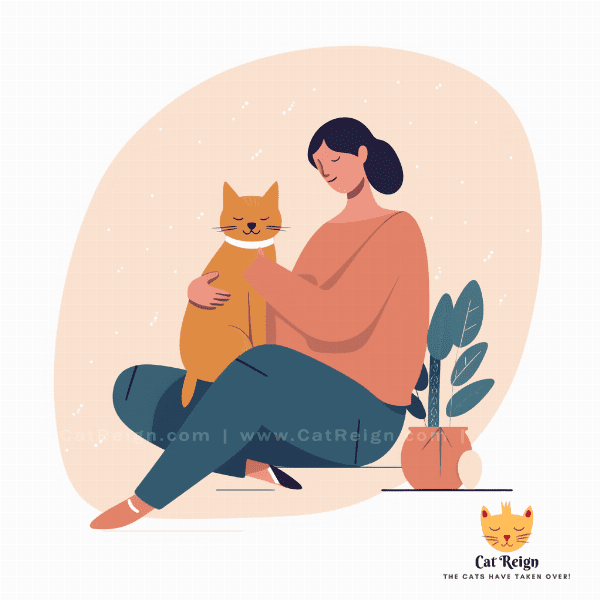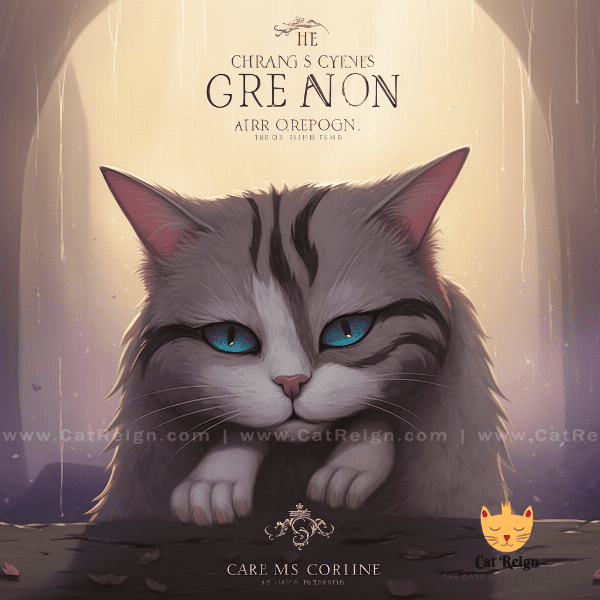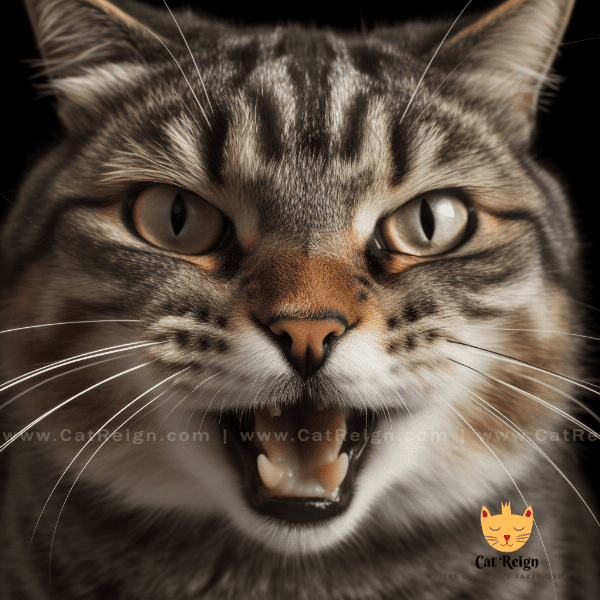Table of Contents
- Understanding Cat Vocalization
- Common Reasons Why Cats Meow Excessively
- Providing Enough Mental and Physical Stimulation
- Creating a Calming Environment
- Avoiding Reinforcing Unwanted Behavior
- Using Positive Reinforcement Training
- Feeding Your Cat Appropriately
- Addressing Any Medical Issues
- Seeking Professional Help
- Being Patient and Consistent in Your Approach
Understanding Cat Vocalization
Cats are known for their unique vocalizations, from purring and trilling to meowing and hissing. These sounds are their way of communicating with humans and other animals. To understand why your cat is meowing excessively, it’s important to know what each sound means and what your cat is trying to convey.
Types of Cat Vocalization
1. Meowing: Meowing is a common sound that cats make to get their owner’s attention. It can range from soft and gentle to loud and persistent. Cats meow for a variety of reasons, such as hunger, boredom, or seeking affection.
2. Purring: Purring is a sound that cats make when they’re content or relaxed. It’s often associated with being petted or cuddled.
3. Hissing: Hissing is a warning sound that cats make when they feel threatened or uncomfortable. It’s often accompanied by arched backs, flattened ears, and defensive postures.
4. Growling: Growling is a low, rumbling sound that cats make when they feel threatened or aggressive. It’s often a warning sign that a cat may lash out if provoked.
Understanding Your Cat’s Body Language
Along with vocalizations, cats also communicate through body language. Understanding your cat’s body language can help you interpret their vocalizations and respond appropriately. For example, if your cat is meowing loudly while arching their back and hissing, it’s a clear sign that they’re feeling threatened and should be given space.
Conclusion
By understanding your cat’s vocalizations and body language, you can better communicate with them and address any excessive meowing behavior. Remember, each cat is unique and may have different reasons for meowing excessively, so pay attention to your cat’s behavior and respond accordingly.
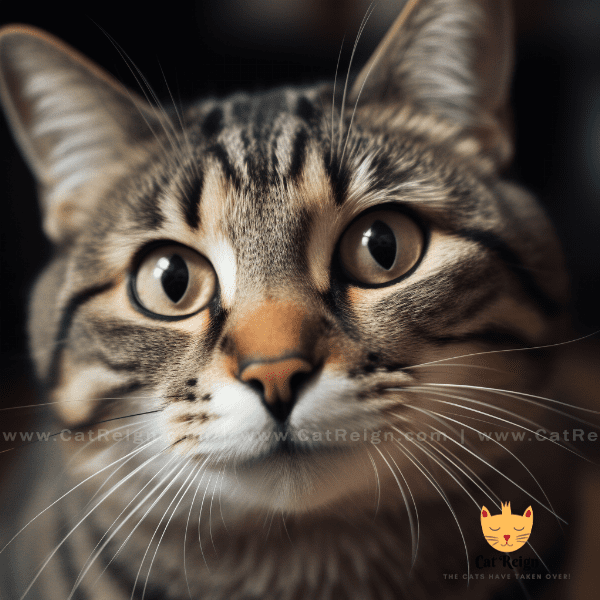
Common Reasons Why Cats Meow Excessively
While cats meow for a variety of reasons, excessive meowing can be a sign of an underlying problem. Here are some common reasons why cats meow excessively:
Hunger or Thirst
Cats may meow excessively if they’re hungry or thirsty. Make sure that your cat has access to fresh water and a balanced diet. If your cat is meowing persistently, try offering them a small meal or treat to see if it resolves the issue.
Attention Seeking
Cats crave attention and affection from their owners, and may meow excessively to get it. If your cat is meowing persistently while you’re busy, try giving them some attention and playtime to satisfy their need for interaction.
Boredom or Lack of Stimulation
Cats are curious animals and need plenty of mental and physical stimulation. If your cat is meowing excessively, they may be bored or feeling unstimulated. Consider providing interactive toys, scratching posts, and perches to keep your cat entertained.
Stress or Anxiety
Stress and anxiety can cause cats to meow excessively. If your cat is meowing persistently and exhibits signs of stress, such as hiding or avoiding contact, it may be time to evaluate your cat’s environment and make necessary changes to reduce stress levels.
Conclusion
Excessive meowing in cats can be a sign of an underlying problem, ranging from hunger and boredom to stress and medical issues. By identifying the cause of your cat’s excessive meowing, you can take steps to address the issue and ensure that your cat is healthy and happy.

Providing Enough Mental and Physical Stimulation
Cats are intelligent animals and require plenty of mental and physical stimulation to stay happy and healthy. If your cat is meowing excessively, it may be a sign that they’re feeling bored or unstimulated. Here are some ways to provide your cat with enough mental and physical stimulation:
Interactive Toys
Interactive toys, such as puzzle feeders and wand toys, can provide your cat with hours of mental and physical stimulation. These toys challenge your cat’s hunting instincts and keep them entertained and engaged.
Scratching Posts
Scratching is a natural behavior for cats, and providing a scratching post can help satisfy this urge while protecting your furniture. Make sure to choose a scratching post that’s sturdy and tall enough for your cat to fully stretch out and scratch.
Perches and Hideaways
Cats love to perch and observe their surroundings from above. Consider providing your cat with a cat tree or window perch to give them a comfortable place to rest and watch the world go by. Hideaways, such as boxes or cat tunnels, can also provide your cat with a cozy and secure space to play and relax.
Playtime and Exercise
Regular playtime and exercise are essential for keeping your cat healthy and stimulated. Make sure to set aside time each day to play with your cat, whether it’s with a wand toy or simply chasing a ball. You can also provide your cat with plenty of opportunities for exercise, such as setting up a cat-friendly obstacle course or providing them with a scratching post that doubles as a climbing structure.
Conclusion
Providing your cat with enough mental and physical stimulation is essential for their overall health and well-being. By incorporating interactive toys, scratching posts, perches, and playtime into your cat’s daily routine, you can help reduce excessive meowing and ensure that your cat is happy and healthy.

Creating a Calming Environment
Cats are sensitive to their environment, and a stressful or chaotic living space can cause them to meow excessively. Creating a calming environment for your cat can help reduce excessive meowing and promote relaxation. Here are some ways to create a calming environment for your cat:
Provide a Safe Space
Cats need a safe and secure space where they can retreat and feel comfortable. Consider providing your cat with a cozy bed or blanket in a quiet, secluded area of your home. This can be especially helpful if you have other pets or children in the home that may be causing your cat to feel stressed.
Use Calming Scents
Certain scents, such as lavender and chamomile, can have a calming effect on cats. Consider using a cat-friendly aromatherapy diffuser or spray to provide a calming scent in your cat’s environment. You can also use pheromone sprays or diffusers to help reduce stress and anxiety.
Reduce Noise and Stimulation
Excessive noise and stimulation can be overwhelming for cats and cause them to meow excessively. Consider reducing noise levels in your home by using white noise machines or closing doors to separate noisy areas. You can also reduce visual stimulation by covering windows or providing your cat with a cozy hideaway where they can feel secure.
Create a Routine
Cats thrive on routine, and creating a predictable daily routine can help reduce stress and promote relaxation. Make sure to feed your cat at the same time each day, provide playtime and exercise at consistent times, and establish a consistent bedtime routine.
Conclusion
Creating a calming environment for your cat is essential for reducing excessive meowing and promoting relaxation. By providing a safe space, using calming scents, reducing noise and stimulation, and creating a routine, you can help your cat feel more comfortable and at ease in their environment.
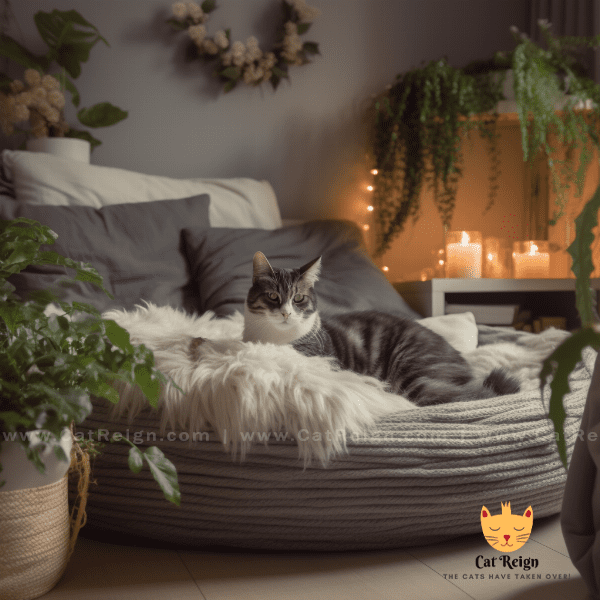
Avoiding Reinforcing Unwanted Behavior
When dealing with excessive meowing in cats, it’s important to avoid reinforcing unwanted behavior. Reinforcing your cat’s meowing by giving them attention or treats can unintentionally encourage the behavior. Here are some ways to avoid reinforcing unwanted behavior in your cat:
Avoid Rewarding Meowing
If your cat is meowing excessively, it’s important to avoid rewarding them with attention or treats. Instead, wait until your cat is quiet and calm before providing them with affection or treats. This will help your cat understand that meowing is not an effective way to get your attention.
Use Positive Reinforcement
Positive reinforcement can be an effective way to encourage desirable behavior in your cat. When your cat is quiet and calm, provide them with affection, treats, or toys to reinforce their good behavior. This can help your cat learn that being quiet and calm is a desirable behavior.
Don’t Punish Your Cat
Punishing your cat for excessive meowing can actually make the behavior worse. Cats don’t respond well to punishment, and it can cause them to become fearful or anxious. Instead, focus on positive reinforcement and creating a calming environment for your cat.
Conclusion
Avoiding reinforcing unwanted behavior is essential for reducing excessive meowing in cats. By avoiding rewarding meowing, using positive reinforcement, not punishing your cat, and being consistent in your approach, you can help your cat learn desirable behavior and reduce excessive meowing.
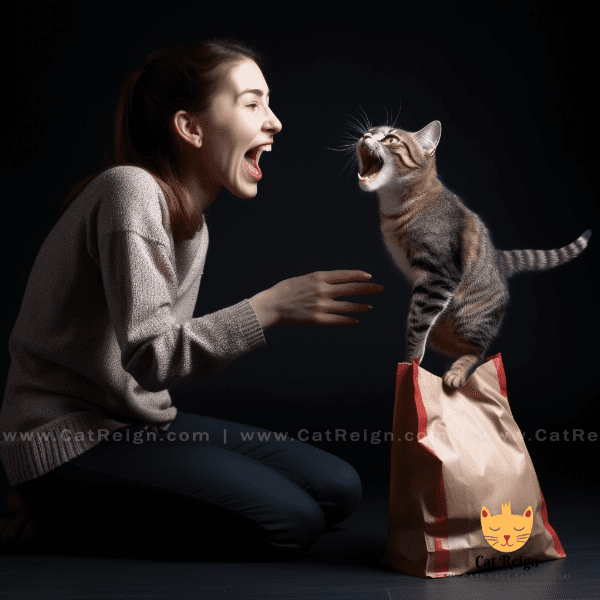
Using Positive Reinforcement Training
Positive reinforcement training is a technique that uses rewards to encourage desirable behavior in cats. This technique can be effective for reducing excessive meowing and promoting desirable behavior. Here are some ways to use positive reinforcement training with your cat:
Identify Desirable Behavior
Before you can use positive reinforcement training, it’s important to identify the desirable behavior you want to encourage in your cat. For example, you may want to encourage your cat to be quiet and calm during certain times of the day.
Choose Rewards
Choose rewards that your cat finds desirable, such as treats or toys. Make sure to choose rewards that are healthy and appropriate for your cat’s diet.
Reward Desirable Behavior
When your cat exhibits desirable behavior, provide them with a reward immediately. This will help your cat associate the behavior with the reward and encourage them to repeat the behavior in the future.
Consistency is Key
Consistency is key when using positive reinforcement training. Make sure to reward desirable behavior consistently and avoid rewarding unwanted behavior. This will help your cat understand what behaviors are desirable and what behaviors are not.
Conclusion
Using positive reinforcement training can be an effective way to encourage desirable behavior in your cat and reduce excessive meowing. By identifying desirable behavior, choosing appropriate rewards, rewarding desirable behavior consistently, and being patient, you can help your cat learn desirable behavior and reduce excessive meowing over time.
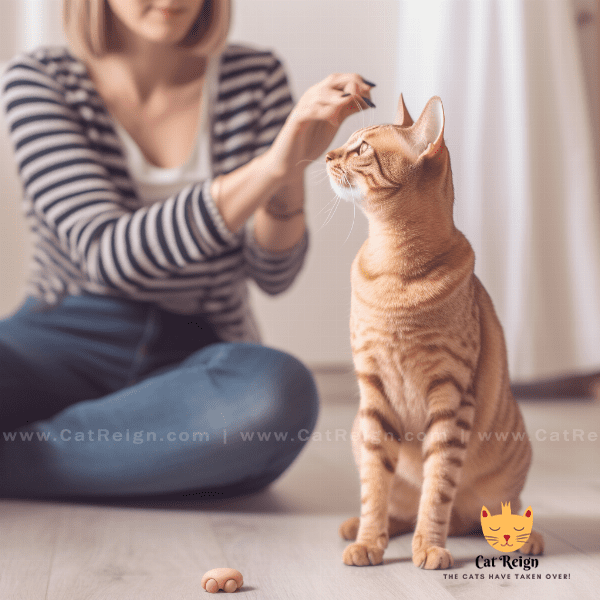
Feeding Your Cat Appropriately
Proper nutrition is essential for keeping your cat healthy and can also play a role in reducing excessive meowing. Here are some tips for feeding your cat appropriately:
Choose a Balanced Diet
Choose a balanced diet that meets your cat’s nutritional needs. Look for cat food that is high in protein and low in carbohydrates. Avoid feeding your cat table scraps or human food, as this can lead to obesity and health issues.
Provide Enough Water
Make sure that your cat has access to fresh water at all times. Consider providing your cat with a water fountain to encourage them to drink more water.
Control Portion Sizes
Control portion sizes to avoid overfeeding your cat. Follow the recommended feeding guidelines on the cat food packaging and adjust portion sizes as needed based on your cat’s age, weight, and activity level.
Use Puzzle Feeders
Puzzle feeders can provide mental stimulation for your cat while also helping to slow down their eating. Consider using puzzle feeders or food-dispensing toys to encourage your cat to eat more slowly and avoid overeating.
Stick to a Feeding Schedule
Stick to a consistent feeding schedule to help regulate your cat’s appetite and reduce excessive meowing. Feed your cat at the same time each day, and avoid free-feeding or leaving food out all day.
Conclusion
Feeding your cat appropriately is essential for their overall health and can also play a role in reducing excessive meowing. By choosing a balanced diet, providing enough water, controlling portion sizes, using puzzle feeders, and sticking to a feeding schedule, you can ensure that your cat is getting the nutrition they need and reduce excessive meowing over time.

Addressing Any Medical Issues
Excessive meowing can also be a sign of underlying medical issues, such as thyroid problems or urinary tract infections. Here are some steps to take if you suspect that your cat’s excessive meowing is related to a medical issue:
Schedule a Vet Visit
If you suspect that your cat’s excessive meowing is related to a medical issue, schedule a visit with your veterinarian. They can perform a thorough examination and run any necessary tests to determine if there is an underlying medical issue.
Follow Treatment Recommendations
If your cat is diagnosed with a medical issue, follow your veterinarian’s treatment recommendations closely. This may include medication, dietary changes, or other treatments.
Monitor Your Cat’s Behavior
Monitor your cat’s behavior closely after treatment to see if their excessive meowing improves. If the behavior continues or worsens, schedule a follow-up visit with your veterinarian.
Stay Up-to-Date on Preventative Care
Regular veterinary check-ups and preventative care, such as vaccinations and parasite control, can help prevent and identify underlying medical issues before they become serious.
Conclusion
Excessive meowing in cats can be a sign of underlying medical issues, such as thyroid problems or urinary tract infections. By scheduling regular veterinary check-ups, following treatment recommendations, monitoring your cat’s behavior, and staying up-to-date on preventative care, you can help ensure that your cat is healthy and reduce excessive meowing over time.
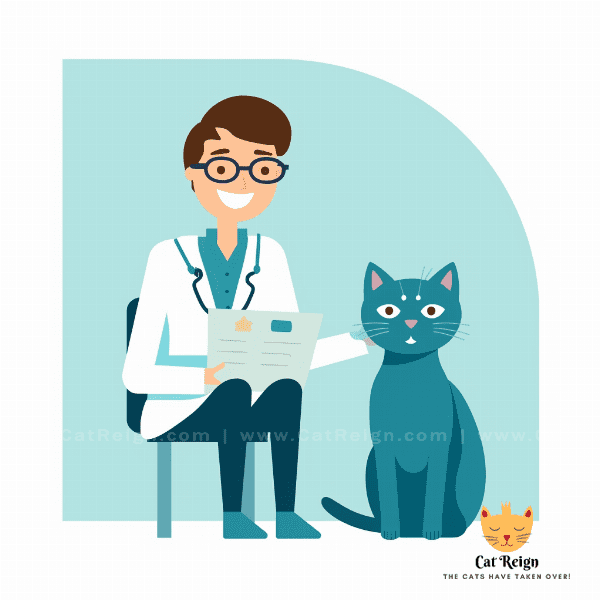
Seeking Professional Help
If your cat’s excessive meowing persists despite your best efforts, it may be time to seek professional help. Here are some steps to take if you need to seek professional help for your cat:
Consult with a Veterinary Behaviorist
A veterinary behaviorist is a veterinarian with specialized training in animal behavior. They can help diagnose and treat behavioral issues in cats, including excessive meowing. Consider scheduling a consultation with a veterinary behaviorist if your cat’s excessive meowing continues despite your best efforts.
Consider Medication
In some cases, medication may be necessary to treat excessive meowing in cats. A veterinary behaviorist or your veterinarian can prescribe medication if it’s deemed necessary.
Work with a Professional Trainer
A professional trainer can provide guidance and training to help modify your cat’s behavior. They can work with you to develop a training plan and provide ongoing support and guidance.
Consider Environmental Modifications
Modifying your cat’s environment can also help reduce excessive meowing. A professional trainer or veterinary behaviorist can provide guidance on how to modify your cat’s environment to reduce stress and promote relaxation.
Conclusion
If your cat’s excessive meowing persists despite your best efforts, seeking professional help may be necessary. Consult with a veterinary behaviorist, consider medication, work with a professional trainer, and consider environmental modifications to help reduce excessive meowing and improve your cat’s overall behavior and well-being.
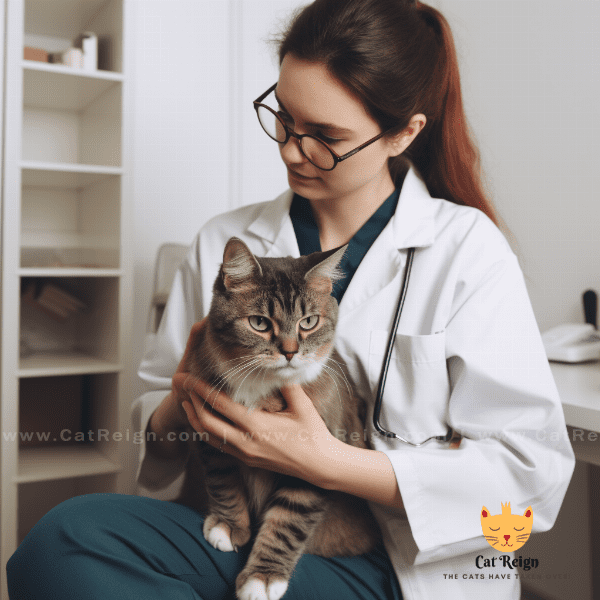
Being Patient and Consistent in Your Approach
Dealing with excessive meowing in cats can be a frustrating and challenging experience, but it’s important to be patient and consistent in your approach. Here are some tips for being patient and consistent in your approach:
Don’t Expect Immediate Results
Reducing excessive meowing in cats takes time and patience. Don’t expect immediate results and be prepared to continue working on modifying your cat’s behavior over a period of weeks or even months.
Stick to a Consistent Plan
Consistency is key when it comes to modifying your cat’s behavior. Stick to a consistent plan and avoid making sudden changes or switching between different training techniques.
Be Patient and Encouraging
Modifying your cat’s behavior requires patience and encouragement. Reward your cat for desirable behavior and avoid punishing or scolding them for unwanted behavior.
Seek Support
Dealing with excessive meowing in cats can be a challenging experience, and it’s important to seek support when needed. Consider joining a cat owner support group or working with a professional trainer or veterinary behaviorist for additional guidance and support.
Conclusion
Reducing excessive meowing in cats requires patience and consistency. By not expecting immediate results, sticking to a consistent plan, being patient and encouraging, and seeking support when needed, you can help modify your cat’s behavior and reduce excessive meowing over time. Remember, with patience and perseverance, you can help your cat become a happy and well-behaved companion.
